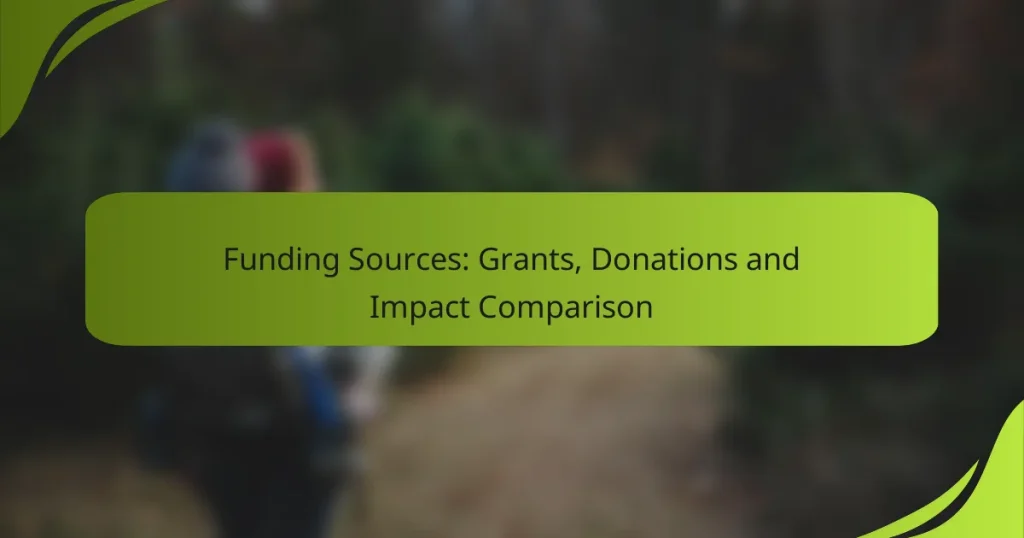Understanding the various funding sources available to nonprofits is essential for securing financial support. Grants, donations, and corporate sponsorships each offer distinct advantages and challenges, influencing how organizations can utilize these funds. While grants often require detailed proposals and adherence to specific guidelines, donations provide greater flexibility in fund allocation, making it crucial for nonprofits to evaluate their funding strategies carefully.

What are the best funding sources for nonprofits?
The best funding sources for nonprofits include grants from government agencies, private donations from individuals, corporate sponsorships, crowdfunding platforms, and foundation grants. Each source has unique characteristics, advantages, and challenges that organizations should consider when seeking financial support.
Grants from government agencies
Government grants provide significant funding opportunities for nonprofits, often aimed at specific projects or initiatives that align with public policy goals. These grants typically require a detailed application process, including project proposals and budgets.
Organizations should be aware of eligibility criteria and compliance requirements, which can vary widely between different agencies. Successful applicants often demonstrate a clear impact on the community and a well-defined plan for utilizing the funds.
Private donations from individuals
Private donations from individuals are a vital funding source for many nonprofits, often providing unrestricted funds that can be used flexibly. Engaging with donors through personalized communication and relationship-building can significantly enhance fundraising efforts.
Nonprofits should consider developing a donor recognition program to encourage repeat giving and foster loyalty. Utilizing online platforms and social media can also help reach a broader audience and attract new supporters.
Corporate sponsorships
Corporate sponsorships involve partnerships between nonprofits and businesses, where companies provide funding or resources in exchange for marketing benefits. This can include event sponsorships, in-kind donations, or employee volunteer programs.
Nonprofits should align their missions with potential corporate partners to create mutually beneficial relationships. Clear communication of the impact of sponsorship can help attract and retain corporate support.
Crowdfunding platforms
Crowdfunding platforms allow nonprofits to raise small amounts of money from a large number of people, typically through online campaigns. These platforms can be effective for specific projects or urgent needs, leveraging social networks for outreach.
Successful crowdfunding campaigns often include compelling storytelling, clear goals, and regular updates to backers. Setting a realistic funding target and offering incentives can also enhance participation.
Foundation grants
Foundation grants are funds provided by private or community foundations to support nonprofit initiatives. These grants often focus on specific areas such as education, health, or social services, and may require detailed proposals outlining the intended use of funds.
Nonprofits should research foundations that align with their mission and tailor their proposals to meet specific guidelines. Building relationships with foundation staff can improve the chances of securing funding and understanding their priorities.
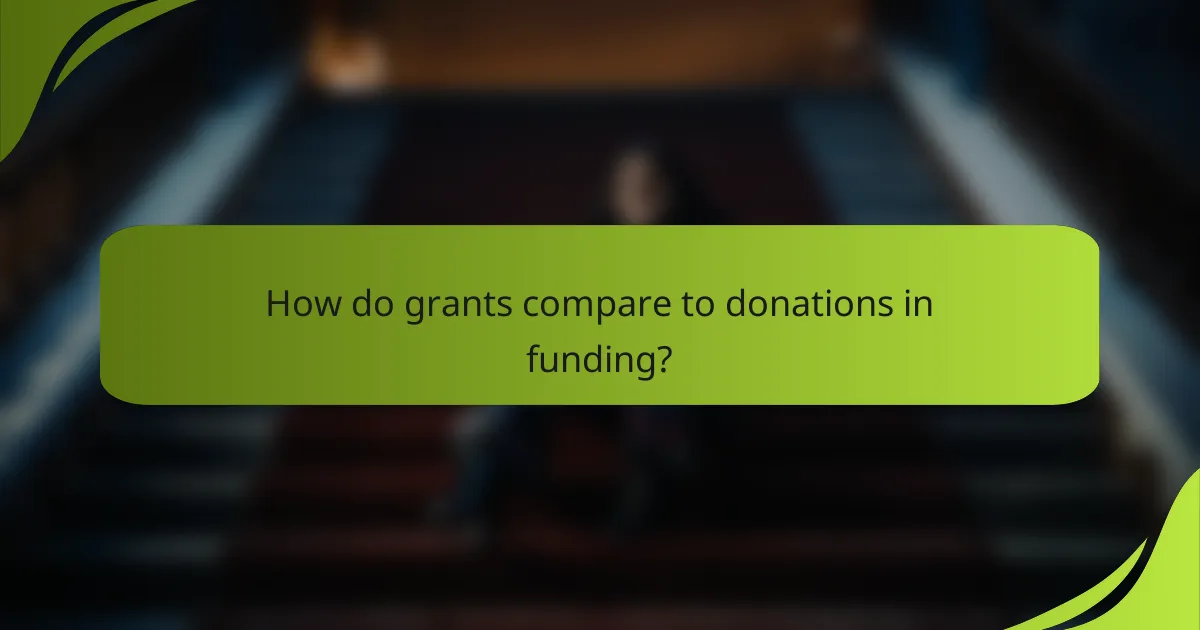
How do grants compare to donations in funding?
Grants and donations serve as crucial funding sources but differ significantly in their structure and application. Grants typically require detailed proposals and adherence to specific guidelines, while donations provide more leeway in how funds can be utilized.
Grants typically require specific project proposals
Grants are often awarded based on formal applications that outline specific projects, objectives, and expected outcomes. Organizations must demonstrate how their initiatives align with the grantor’s goals, which can include government agencies, foundations, or corporations.
When applying for grants, it’s essential to follow the guidelines closely, including budget constraints and reporting requirements. Failure to meet these criteria can result in disqualification or funding withdrawal.
Donations offer more flexibility in use
Donations provide organizations with greater flexibility in how funds are allocated. Unlike grants, donations do not typically require a detailed proposal or specific project alignment, allowing for immediate use in various operational areas.
This flexibility can be advantageous for organizations facing urgent needs or unexpected expenses. However, it is important to maintain transparency with donors regarding how their contributions are utilized to foster trust and encourage future support.
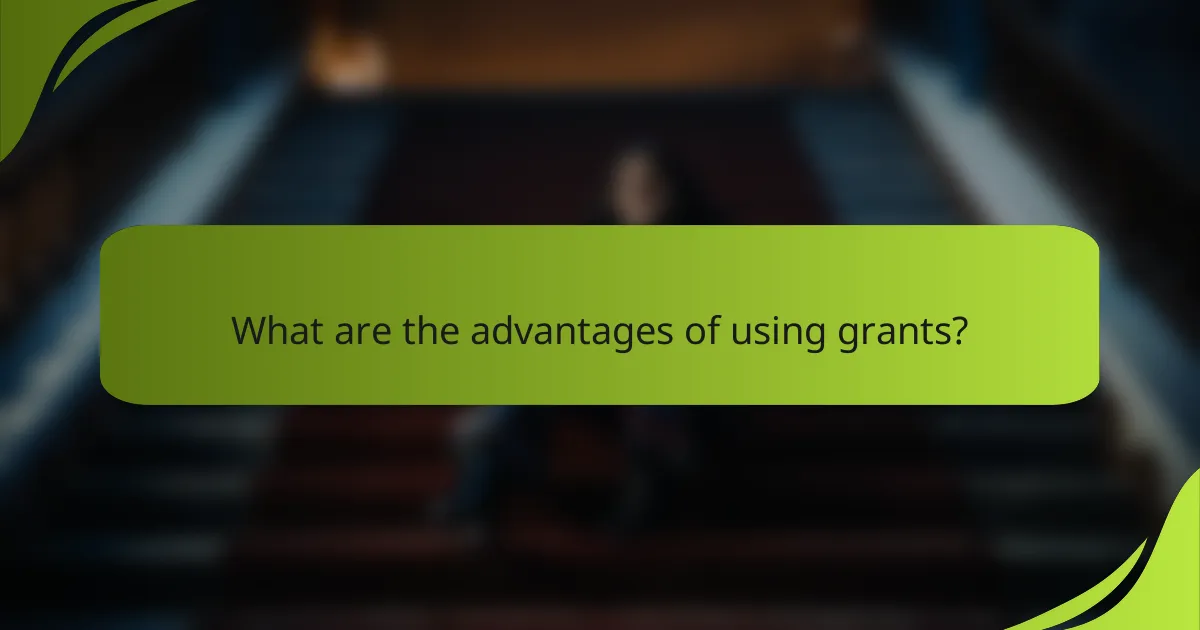
What are the advantages of using grants?
Grants provide organizations with significant funding opportunities that do not require repayment, making them an attractive option for many projects. They can support a wide range of initiatives, from research to community development, and often come with specific goals that align with the funder’s mission.
Access to larger funding amounts
One of the primary advantages of grants is the potential for accessing larger sums of money compared to other funding sources like donations. Grants can range from a few thousand to millions of dollars, depending on the project and the funding agency.
For instance, federal grants in the United States can offer substantial amounts for research and development, while European Union grants may support large-scale projects across member states. Organizations should carefully review grant opportunities to identify those that align with their funding needs.
Potential for multi-year funding
Grants often provide the possibility of multi-year funding, which can offer financial stability for long-term projects. This type of funding allows organizations to plan and execute initiatives over several years without the constant pressure of securing new funds annually.
For example, a nonprofit focused on education may receive a grant that spans three to five years, enabling them to implement comprehensive programs and measure their impact effectively. However, organizations should be aware that multi-year grants typically require ongoing reporting and accountability to the funder.
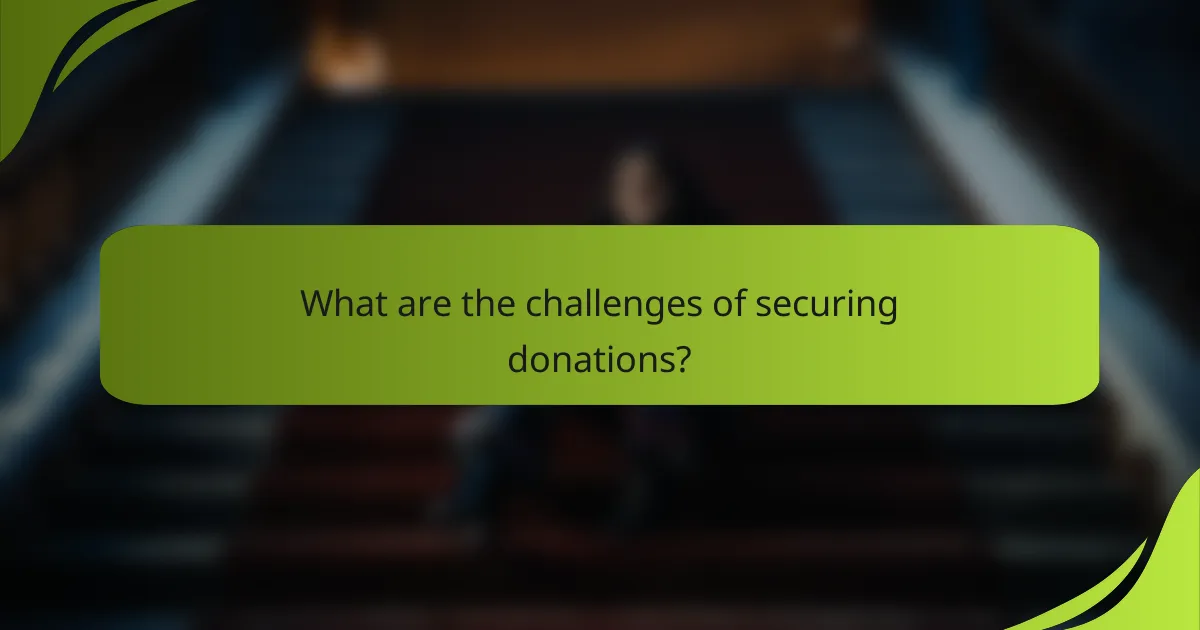
What are the challenges of securing donations?
Securing donations presents several challenges, including building lasting relationships with donors and navigating a competitive landscape. Organizations must be strategic in their approach to attract and retain financial support.
Building donor relationships takes time
Establishing strong relationships with donors is a gradual process that requires consistent communication and engagement. Organizations should prioritize transparency and demonstrate the impact of contributions to foster trust.
Regular updates, personalized outreach, and acknowledgment of donations can significantly enhance donor loyalty. Consider hosting appreciation events or sending personalized thank-you notes to reinforce connections.
Competition for donor attention
The nonprofit sector faces intense competition for donor attention, with numerous organizations vying for limited resources. To stand out, it is crucial to clearly articulate your mission and the unique value you provide.
Utilizing various channels such as social media, email campaigns, and community events can help increase visibility. Tailoring your messaging to resonate with specific donor interests can also improve engagement and support.
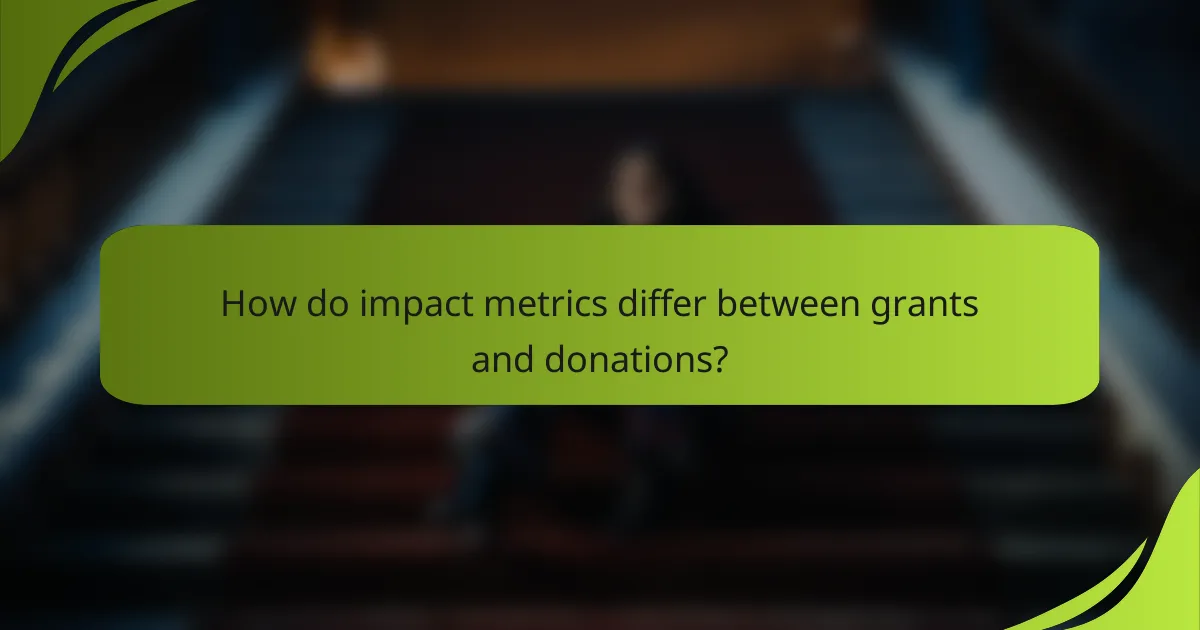
How do impact metrics differ between grants and donations?
Impact metrics for grants and donations differ primarily in their focus and reporting requirements. Grants typically emphasize long-term outcomes and require detailed reporting, while donations often prioritize immediate results and less formal accountability.
Grants often require detailed reporting
Grants usually come with stringent requirements for tracking and reporting on the impact of the funded project. Organizations must often submit comprehensive reports that detail how funds were used, the outcomes achieved, and how these align with the grant’s objectives.
This reporting process can include quantitative metrics, such as the number of beneficiaries served, as well as qualitative assessments, like case studies or testimonials. For example, a grant for a community health initiative might require data on health improvements over a year, along with narratives from participants.
Donations may focus on immediate outcomes
In contrast, donations tend to emphasize quick, visible impacts that can be communicated to donors. Funders often want to see how their contributions make a difference right away, such as funding a specific project or event.
For instance, a donation to a local food bank might be reported in terms of the number of meals provided in a month, rather than long-term changes in food security. This immediate feedback can help maintain donor engagement and encourage future contributions.

What are the prerequisites for applying for grants?
To apply for grants, organizations typically need to meet specific prerequisites that ensure eligibility and readiness. These often include having verified nonprofit status and a well-developed project proposal that outlines the intended use of funds.
Nonprofit status verification
Many grant-making organizations require applicants to have verified nonprofit status, which confirms that the organization operates for charitable purposes rather than for profit. This status is often validated through documentation such as a 501(c)(3) designation in the United States or equivalent recognition in other countries.
Before applying, ensure that your nonprofit status is current and that all necessary paperwork is in order. This may include tax-exempt status letters, bylaws, and financial statements. Failing to provide accurate verification can lead to disqualification from the grant process.
Project proposal development
A strong project proposal is crucial when applying for grants, as it outlines the objectives, methods, and expected outcomes of the project. It should clearly articulate how the project aligns with the funder’s priorities and demonstrate the potential impact of the funding.
When developing your proposal, include a detailed budget that outlines how funds will be allocated, as well as a timeline for project implementation. Avoid vague language and ensure that your goals are specific, measurable, achievable, relevant, and time-bound (SMART). Common pitfalls include overestimating impact or underestimating costs, so be realistic in your projections.

How can organizations effectively manage donor relationships?
Organizations can effectively manage donor relationships by prioritizing consistent communication and personalized engagement. Building trust and demonstrating impact are essential to maintaining long-term support from donors.
Regular communication and updates
Regular communication is crucial for keeping donors informed about the organization’s activities and impact. This can include newsletters, social media updates, and personalized emails that highlight recent achievements and upcoming initiatives.
Consider setting a schedule for updates, such as monthly newsletters or quarterly reports. This helps create a routine that donors can expect, fostering a sense of connection and involvement.
Personalized engagement strategies
Personalized engagement strategies enhance donor relationships by tailoring interactions to individual preferences and interests. This might involve recognizing birthdays, anniversaries, or specific contributions, which can make donors feel valued and appreciated.
Utilize donor data to segment your audience and customize outreach efforts. For example, some donors may prefer in-person events, while others might appreciate virtual meetings or exclusive updates on specific projects. Understanding these preferences can significantly improve donor satisfaction and retention.
